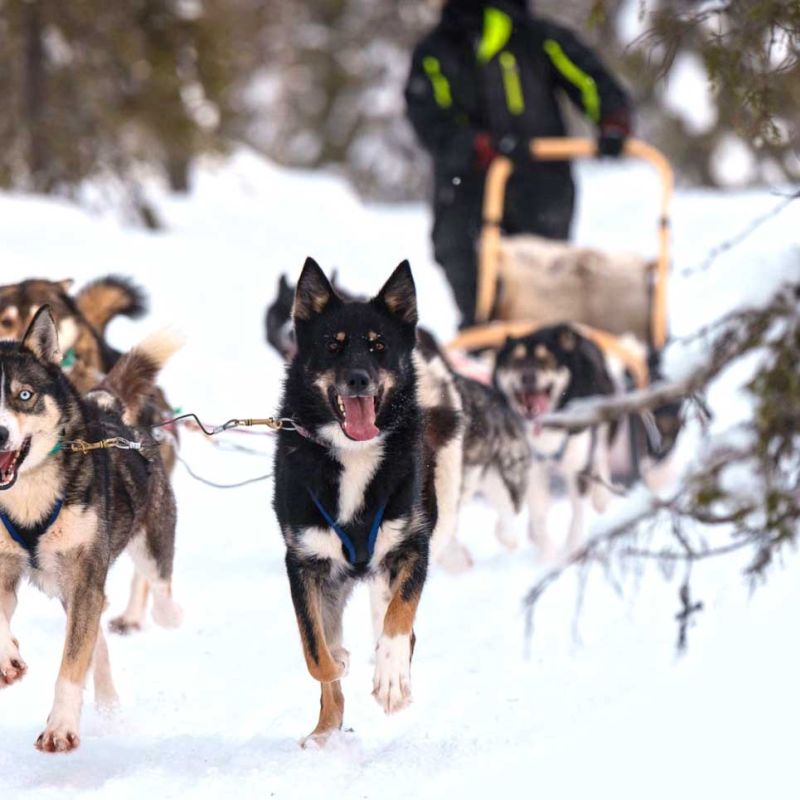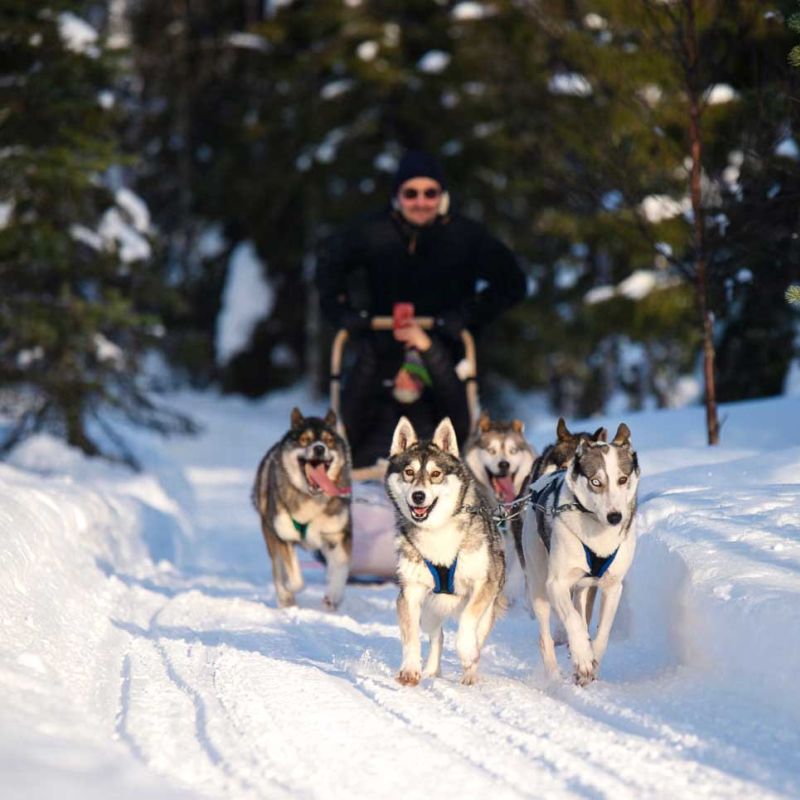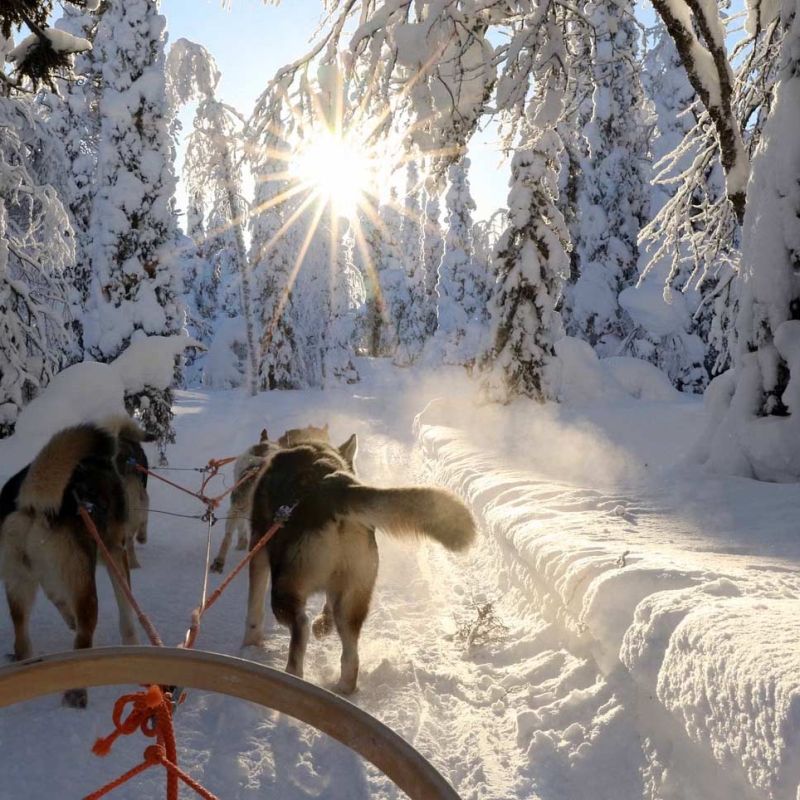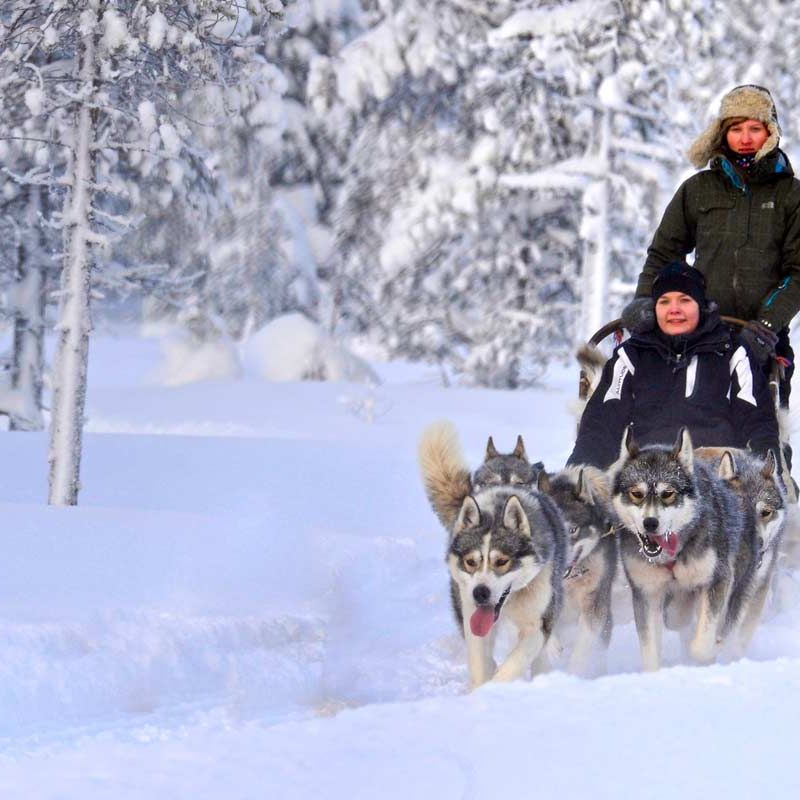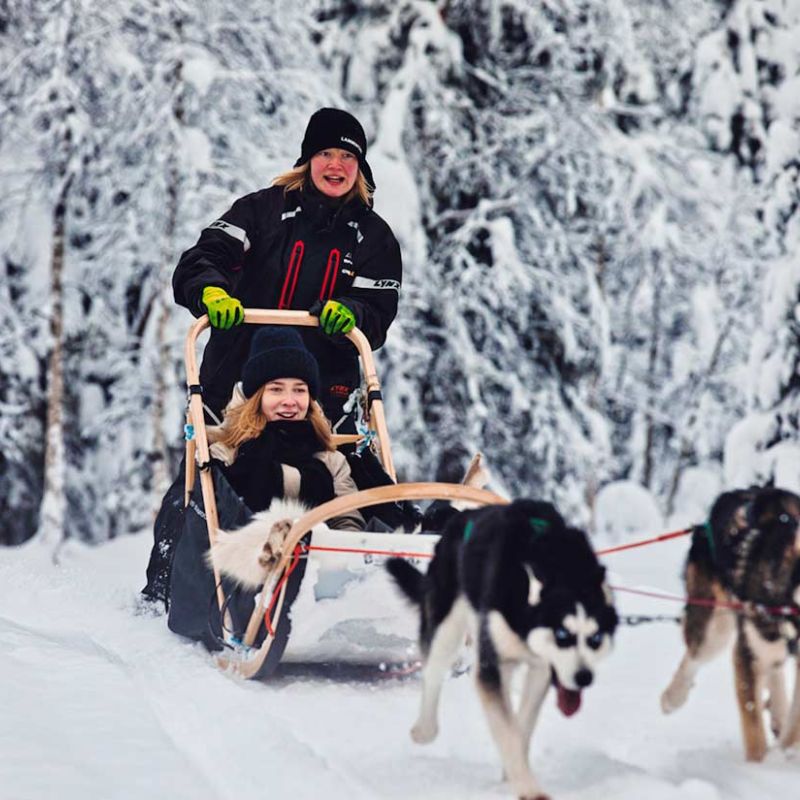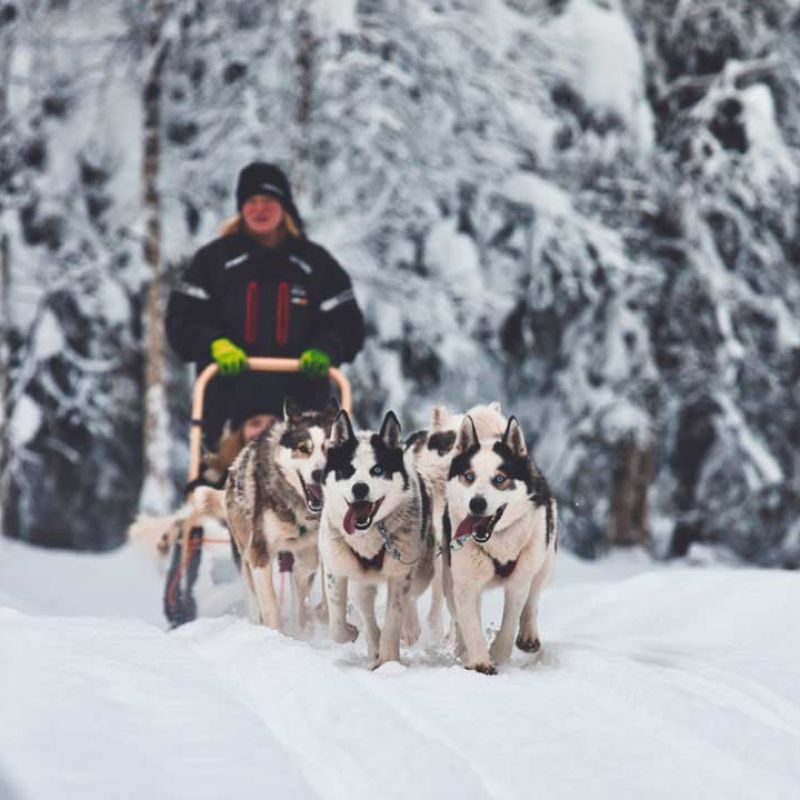Husky Safaris
Our happy husky dogs love running! They are eagerly waiting for travellers at the kennel near the café.
Life at the kennels
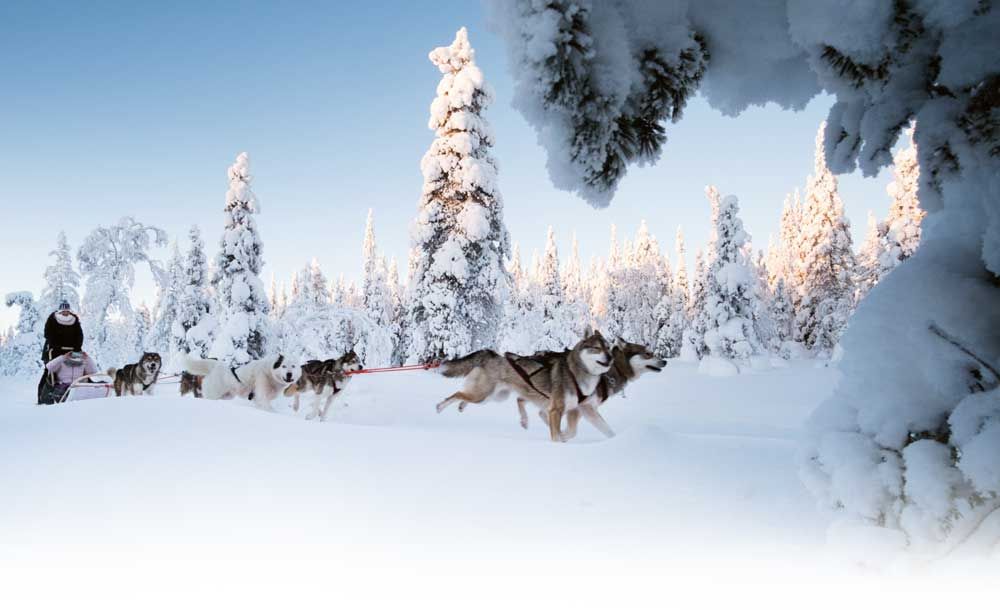
Majuri, Bolt, Simba, Nils Holgersson, Usva, Mufasa, Martta, Muru, Kiela, Dora and the rest of our 140 furry hounds are waiting for you!
Lammintupa is the home of 150 sled dogs. Alaskan Huskies, Siberian Huskies and also some Alaskan Malamutes. Huskies have been used as sled dogs for hundreds of years, and here at Lammintupa for over 10 years. Huskies love running, and going to work is the best moment of the day for them. Their eager bark welcomes you from afar!
Huskies
All our dogs have names. The guides who work for us know all our dogs by name and as individuals with their own characteristics, which is plenty to remember! There are 2–3 guides who work at our kennel all year round, and a few seasonal guides who have worked at our shelter in many winters. The guides have the primary responsibility for the daily care and well-being of the dogs. In winter, several new guides always join the group to work at Lammintupa for the season. The main guides always show the newcomers the ropes at the kennels.
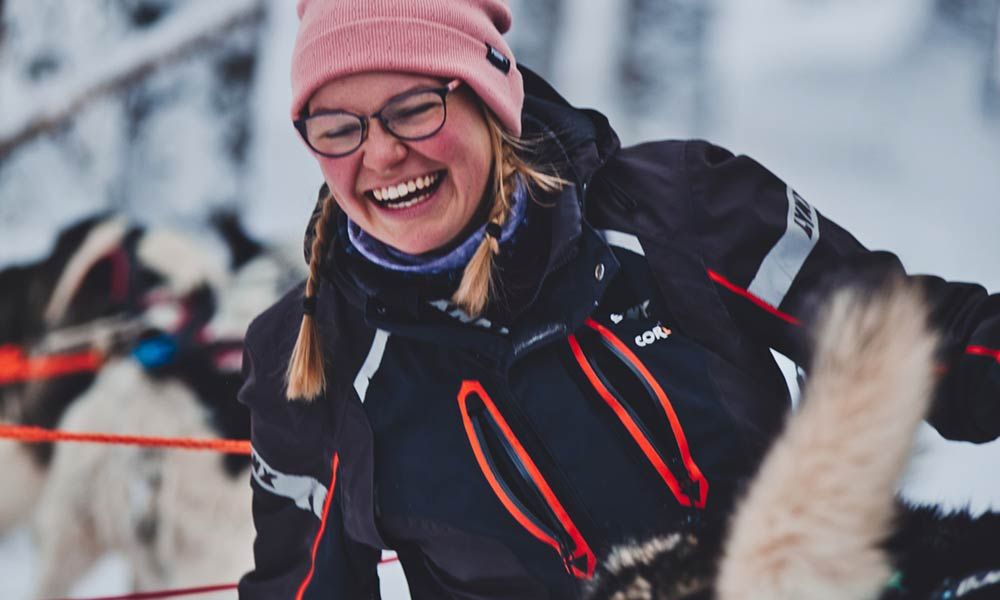
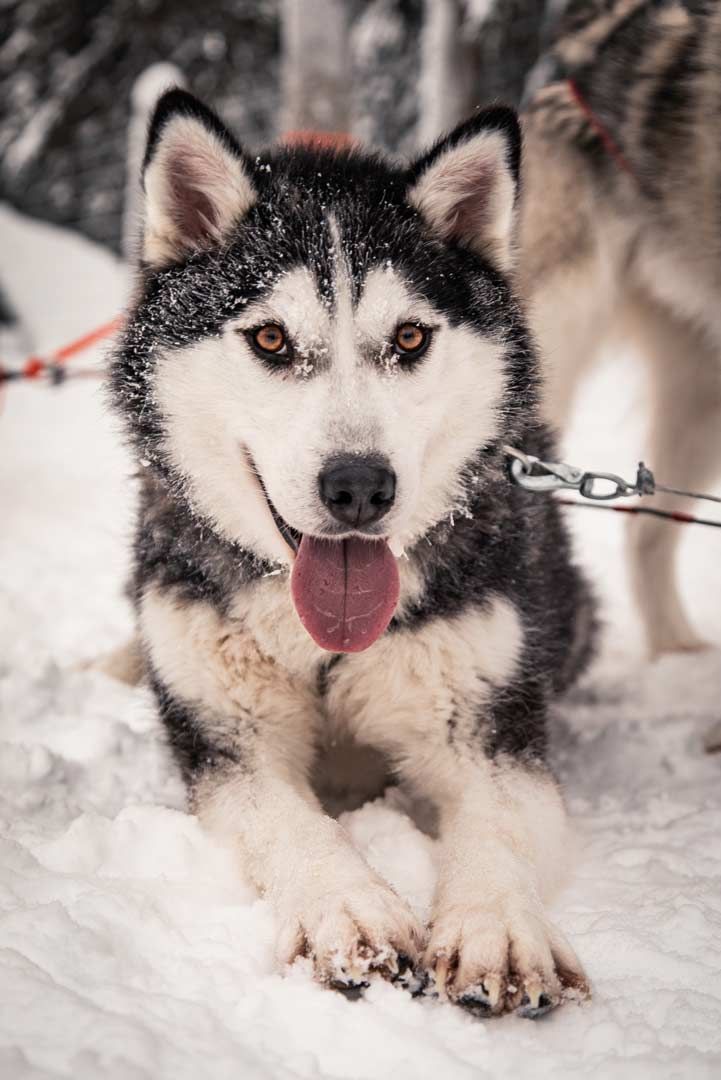
The kennels
Our kennels are kept clean, and we tidy them every day. Each dog has its own kennel, although bitches in particular often like to sleep in the same kennel with another dog. Most of our kennels are insulated and plenty of bedding is used in all of them. We also have heated kennels for small puppies.
In general, the dogs always live in the same building with the same dog friends (2–4 dogs). The dogs also work with this same group as a team. Dog teams are generally selected based on their character traits. We have 6 dogs running in one team. Usually 2 females as front dogs and 4 males behind them.
New sled dogs
We breed and raise our huskies ourselves, and all the puppies stay with us. The dogs selected for breeding have good work motivation and character, and are easy to handle. Males other than those used for breeding are generally castrated. New puppies are bred according to our needs. We always think a few years ahead, how many dogs are approaching retirement age, and that determines how many litters we need. Usually there have been 1–4 litters per year, depending on the size of the litters. Our customers can get to know the puppies usually from about 6 weeks of age onwards. This has been a great benefit in the socialization of the puppies.

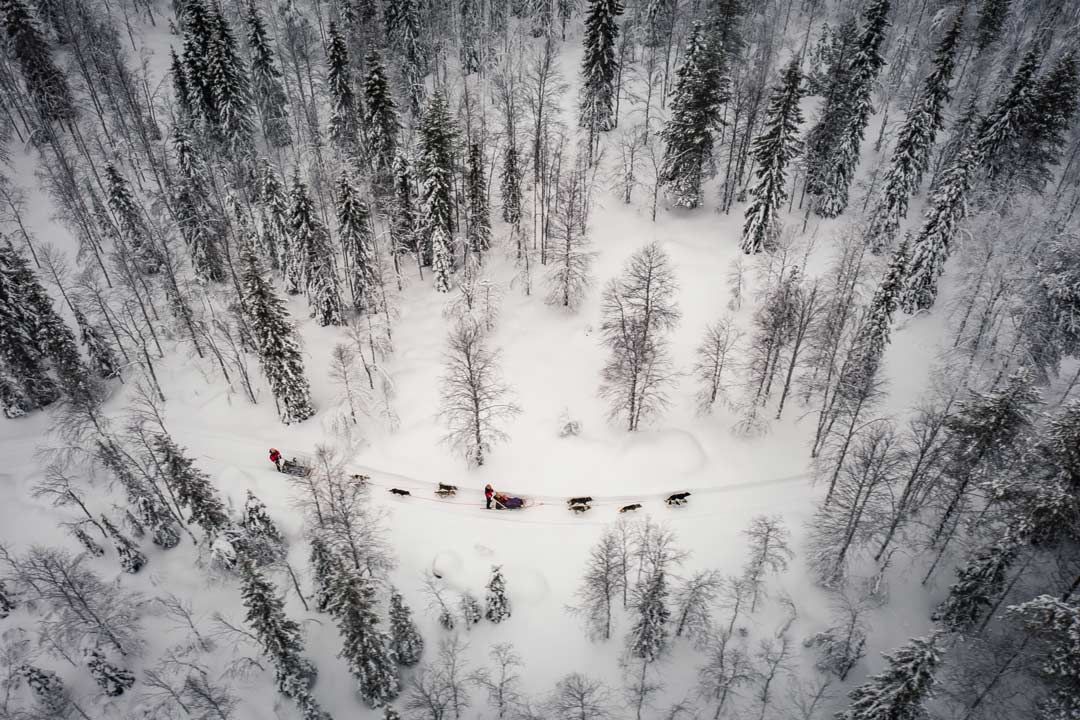
Training
Most of our dogs begin working at the age of one. However, some individuals may take 2–3 years before they are qualified sled dogs. The dogs live with us all their lives, from puppyhood to retirement age. Retired dogs (approx. 10–15 years old) are valuable teachers for younger sled dogs, and are allowed to take light runs with the puppies in the sled team, as long as they remain healthy.
The training of the sled dogs normally starts in September–October, so that our dogs are in shape before the start of the season. In winter, a record is kept of the distances run by the dogs and the number of their days off. All dogs have at least one day off per week during the season. The youngest and oldest dogs work less.
Our dogs eat quality food all year round. In winter, the dogs begin their morning with a fulfilling drink. Two hours before their work starts, the dogs are given a drink of warm water mixed with plenty of fatty meat. They are also offered meaty broth during the day between runs, when they are having a break. The actual feeding takes place in the afternoon after the dogs’ working day is over. Their food consists of high-quality domestic dry food, vitaminized fatty meat and liquid. Once a week, the dogs also get salmon, and reindeer bones to chew on. In summer, the dogs’ diet consists mostly of salmon, and it is supplemented with dry food, meat and bones.


